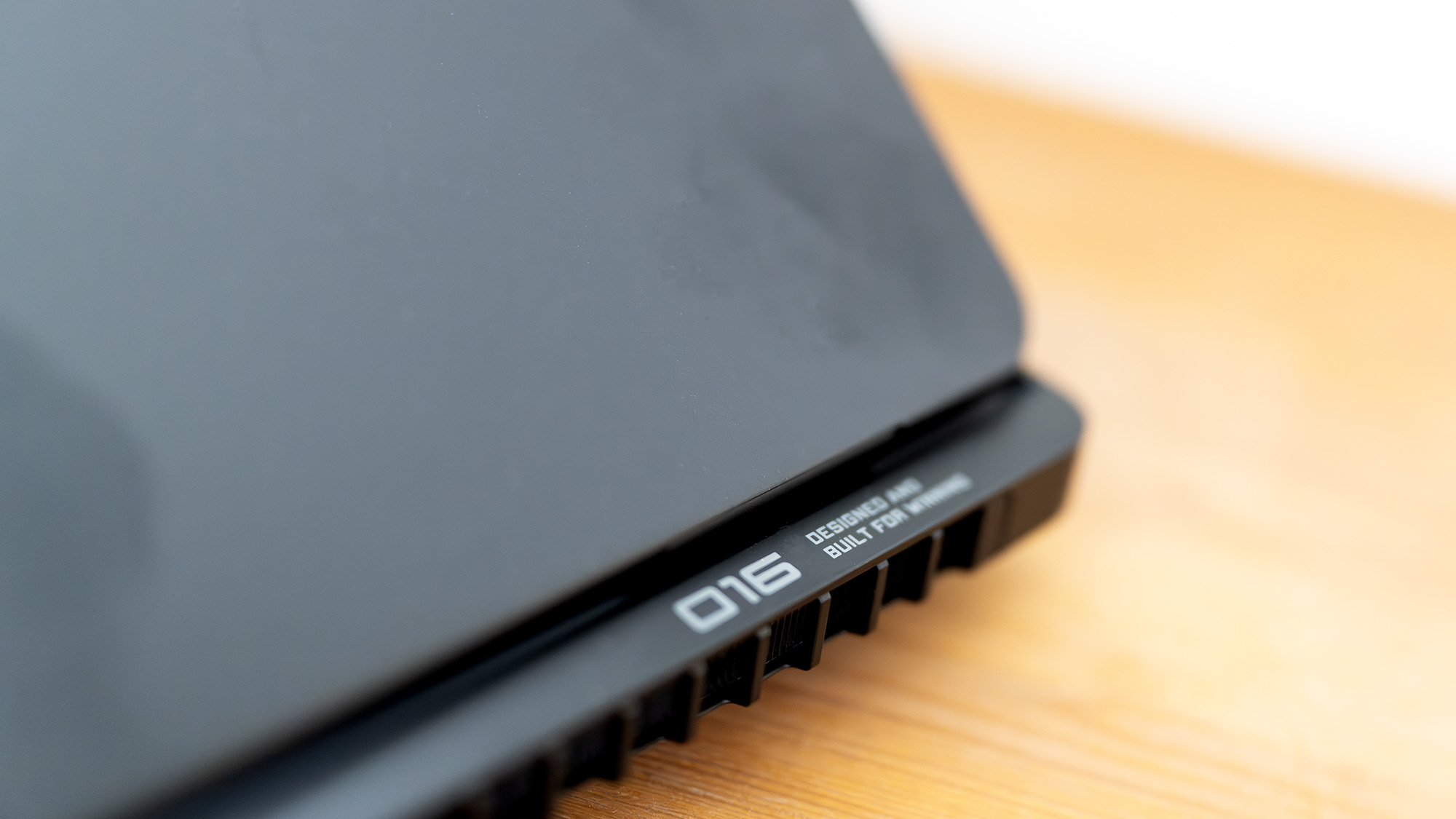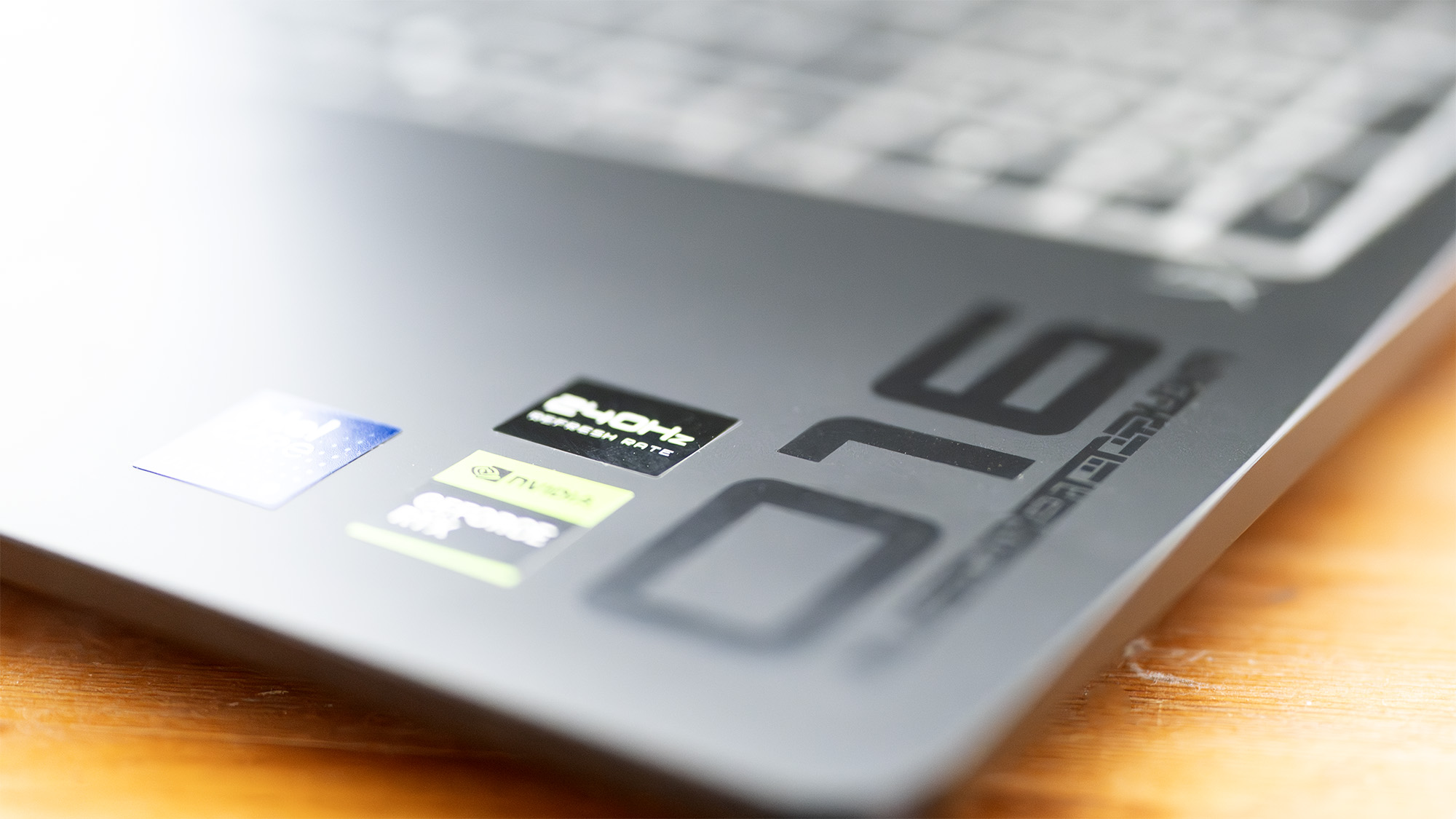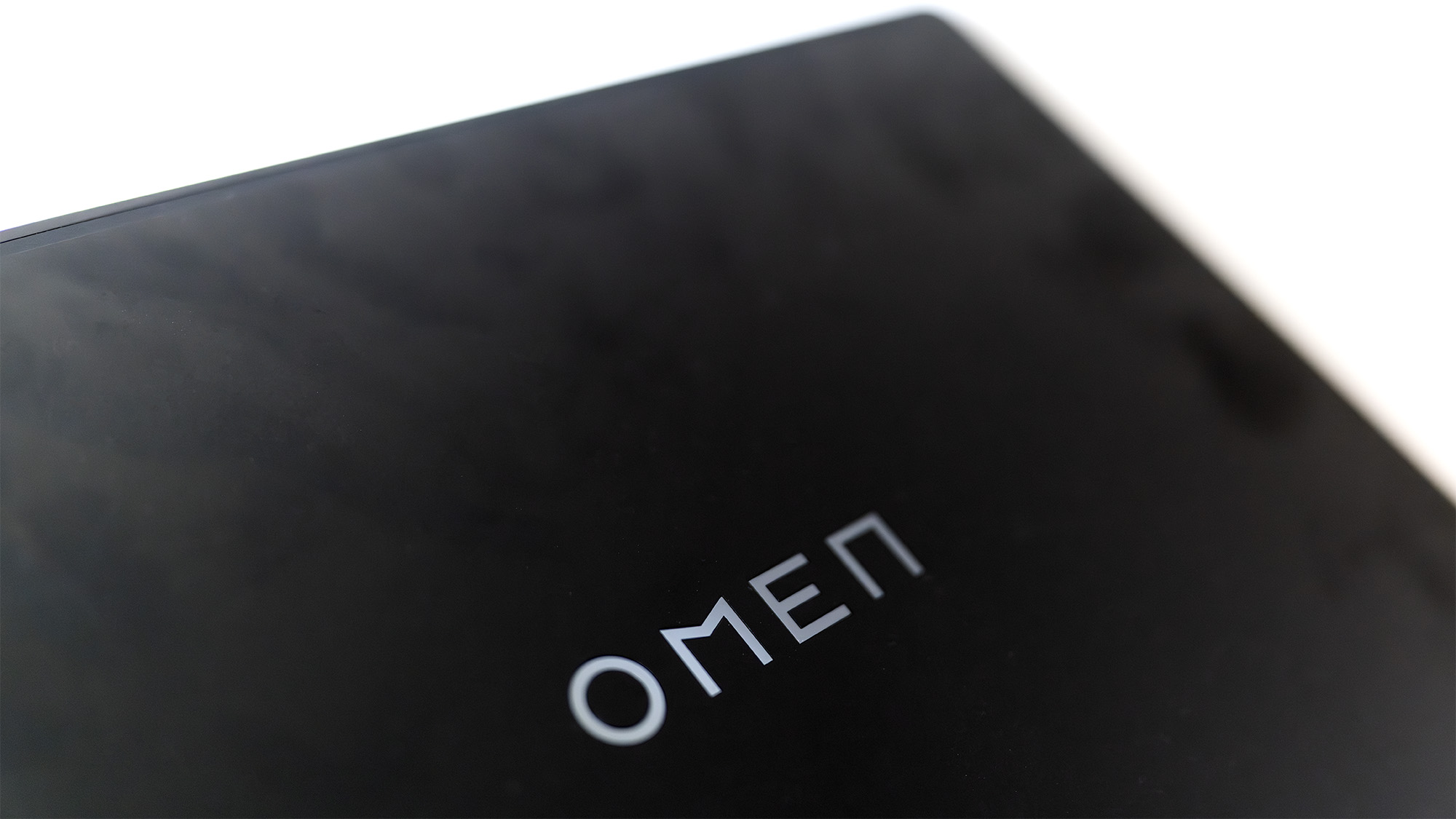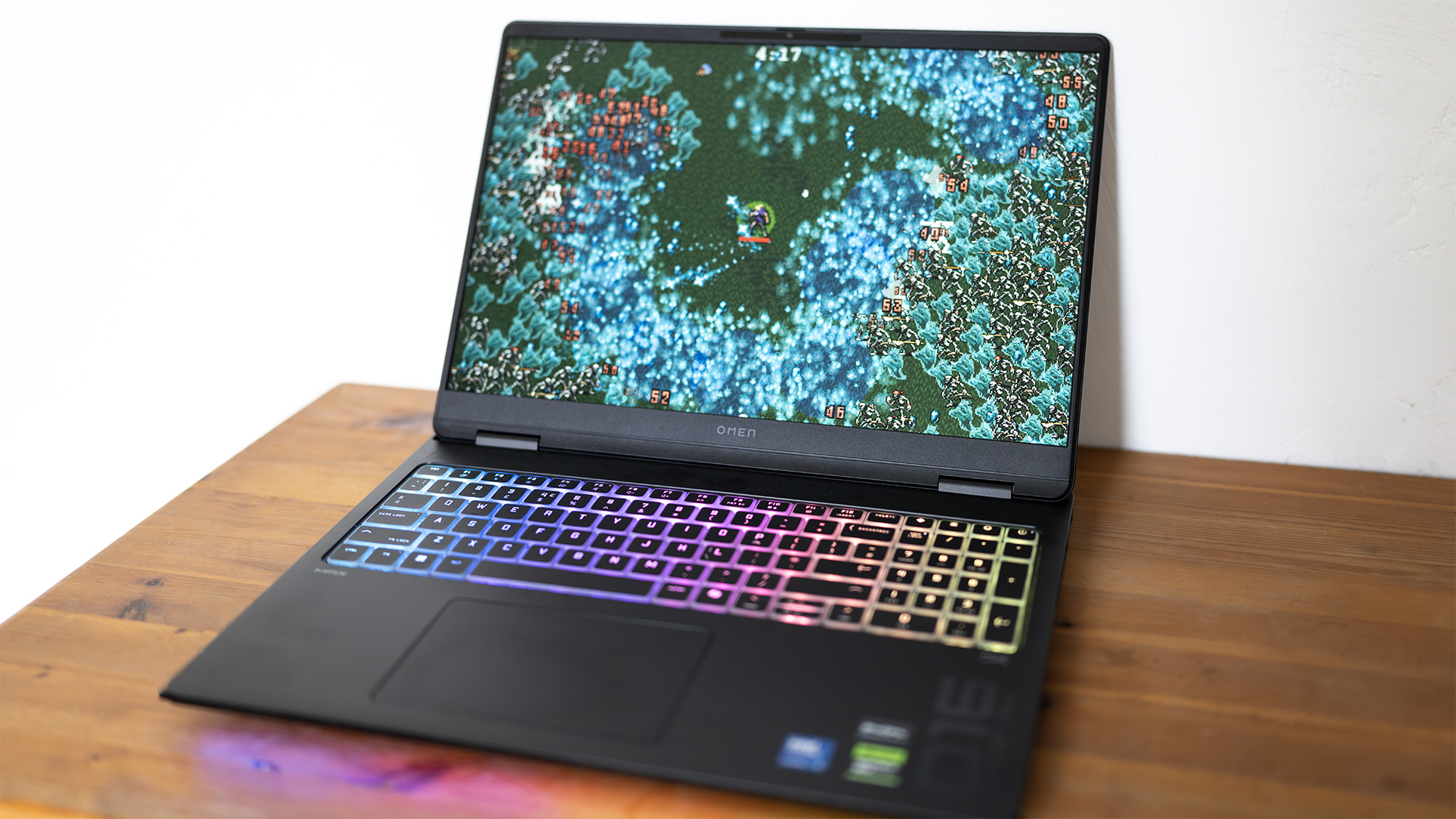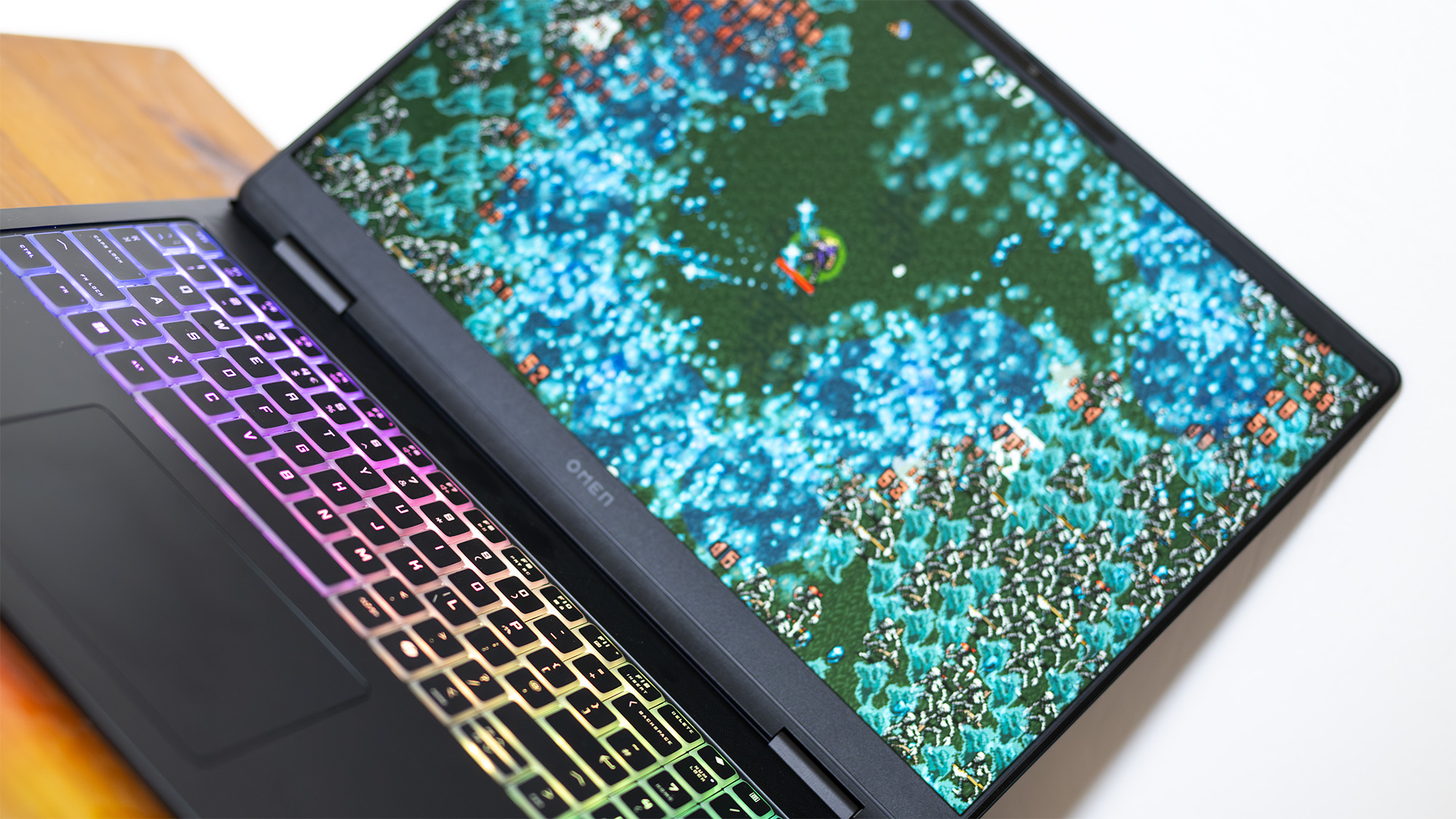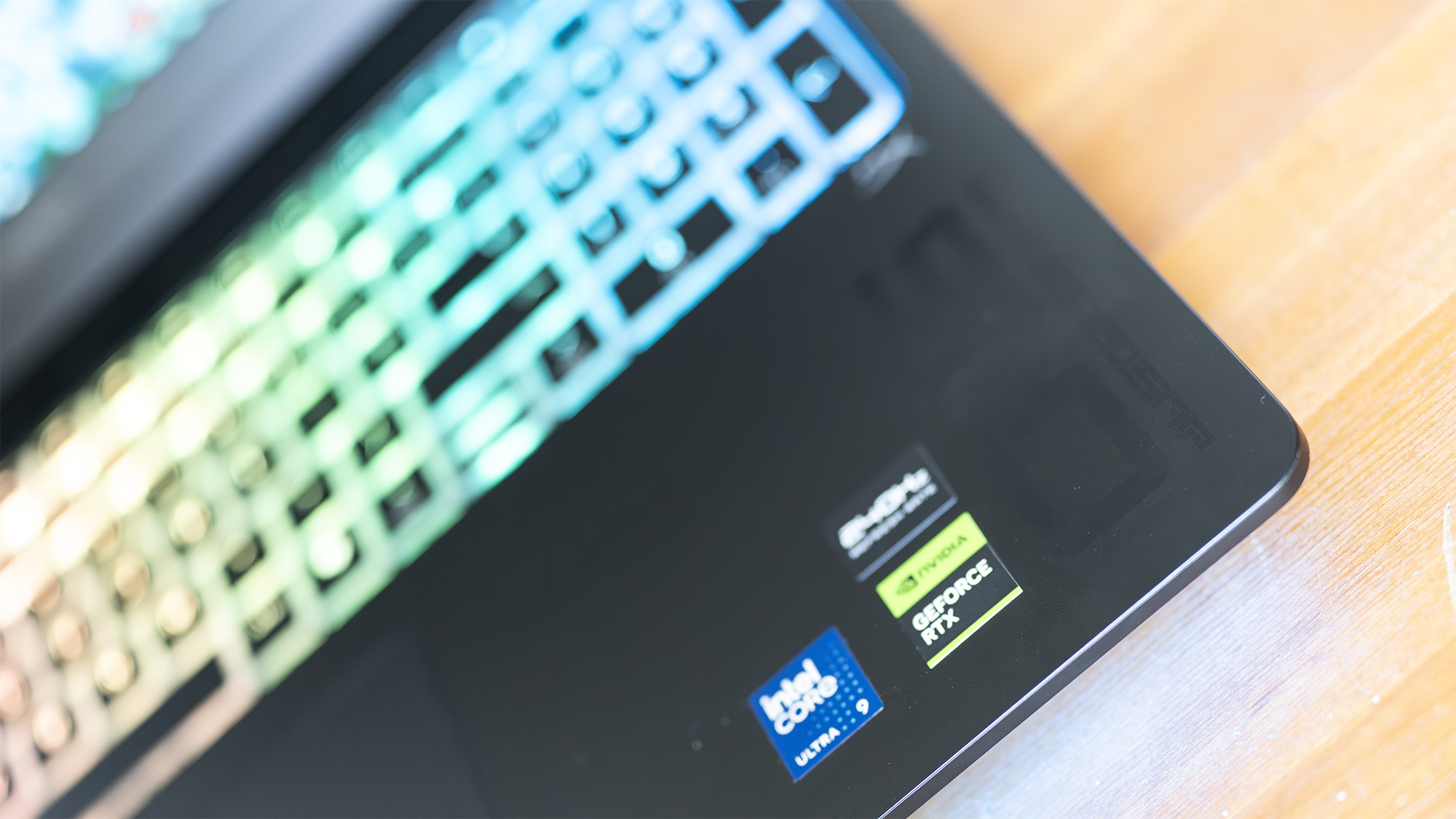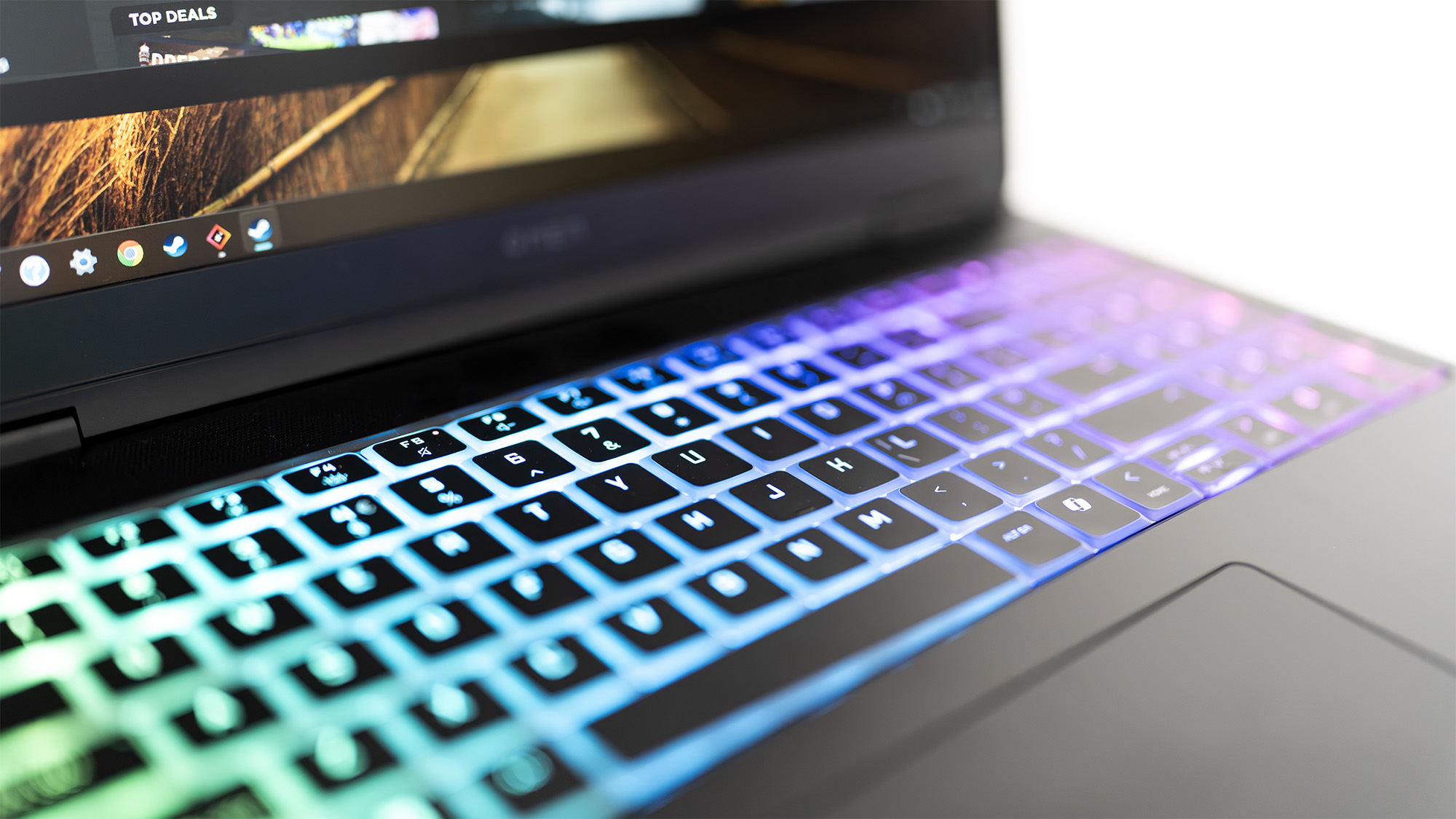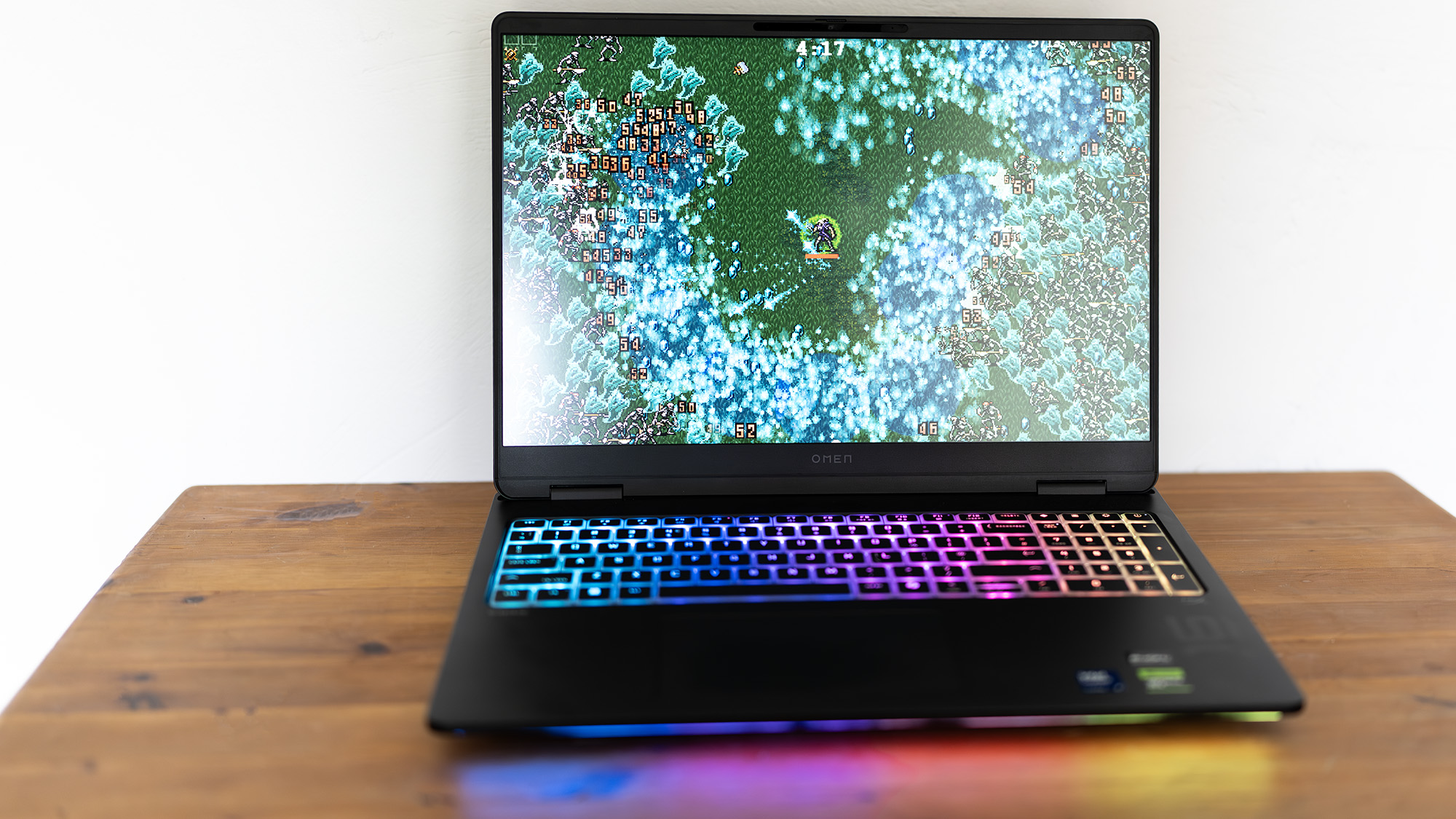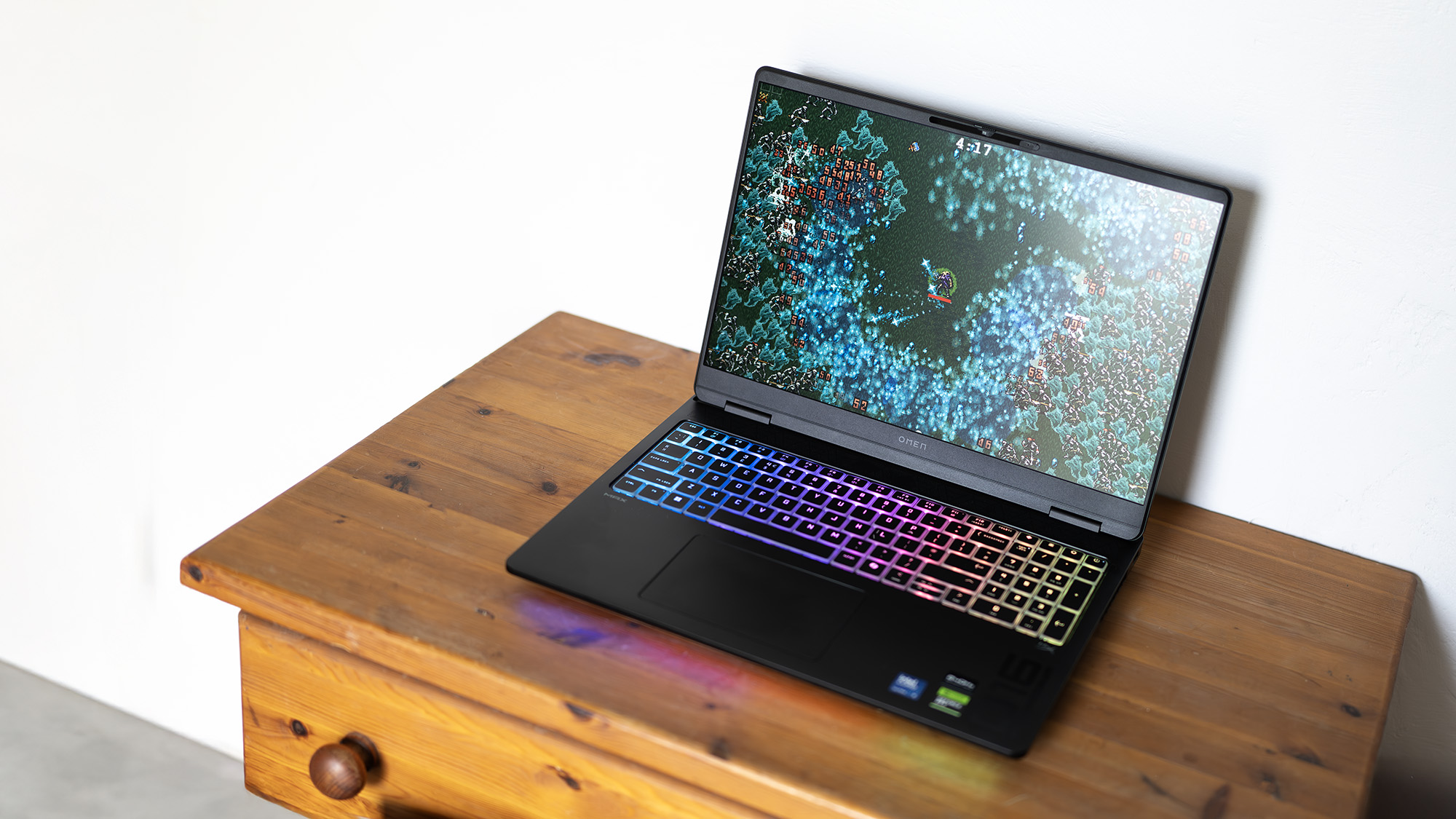
A big noisy monster, and that's just fine by us.
The 16-inch gaming laptop is a wonderful invention. The slightly larger screen over a 15.6-inch model, made even wider thanks to modern slim bezels, looks great, and allows for a chassis that’s just that tiny bit roomier, so we get full-size keys, numpads, even speakers. They’re not as ridiculous as 18-inch laptops—those silly machines—and you can actually use them as portables instead of being tied to keeping them on a table somewhere.
HP has taken the opportunity to cram this 16-inch Omen Max 16 with the latest gaming technology. There’s a Core Ultra 9 and an RTX 5080 laptop GPU in there, along with lots of RAM and a decent SSD. It’s a complete package, albeit a bit of a heavy one.
There’s a lot to like about the Omen Max 16, but what I especially appreciate is the way it doesn’t skimp. Being able to fit one of the new RTX 50-series graphics chips in a laptop is one thing, but HP didn’t need to put Thunderbolt 4 in a gaming machine—USB 4 or even USB 3.2 10 Gbps would have done—so we get extra video outputs alongside an HDMI 2.1 that’s already perfectly well suited to hooking up an external monitor, alongside the capability to use some of the fastest external storage and a 2.5Gb Ethernet network too.
Away from the port selection, this is also a really nice laptop to actually use. The screen is an IPS rather than an OLED, with a 16:10 2.5K resolution and a 240 Hz refresh rate that will still make many people happy. It’s not a touchscreen, but you get a decent-sized trackpad.
CPU: Intel Core Ultra 9 275HX
NPU: Intel AI Boost
Graphics: Nvidia RTX 5080 (175 W)
Memory: 32 GB DDR5-5600
Storage: 1 TB SSD
Screen size: 16-inch
Screen type: IPS
Resolution: 2560 x 1600
Refresh rate: 240 Hz
Ports: 2x Thunderbolt 4, 2x USB Type-A 10Gbps, 1x HDMI 2.1, 1x 2.5Gb Ethernet, 1x AC charging, 1x 3.5 mm audio combo
Wireless connectivity: Wi-Fi 7, Bluetooth 5.4
Dimensions: 35.65 x 26.9 x 2.48 cm
Weight: 2.68 kg
Price: $3,299.99 | £2,999.99
Though it only seems to respond to taps and not clicks, despite having a nicely positive click mechanism, which is a big problem if you’re trying to drag with the trackpad—hopefully this will turn out to be a settings or driver issue and can be addressed. There’s also a keyboard with a 3D effect to the keys that looks like someone’s been biting the tips off Toblerone segments.
Still, it’s definitely a gaming laptop. You can tell by the way it lights up (the keyboard is a rainbow, and there’s a light bar under the front lip), has a foreboding name, and a little slogan written on the back. It’s “Designed and built for winning,” apparently. While it’s outside the scope of this review to promise victory, or even speculate on its likelihood, what it can do is offer proof of frame rates.
Cramming a GPU like the RTX 5080 into a laptop was always going to generate the frames, but it generates heat too. Having the fan exhaust pointing downward means that warmth is directed at an area of leg just above your knees, making it a suboptimal machine for use while wearing shorts, and there are also some big vents at the back.
It needs them.
I saw CPU temperatures rise to 60 °C just while installing software and 105 °C (briefly—well into thermal throttling territory) while running benchmarks, with the GPU spending most of its time around 70 °C while being pushed. Though it’s fair to say that all the laptops we’ve has tested with this CPU exhibit this same thermal behaviour.
HP has equipped the Omen Max with its ‘AI’ fan control software, and an ‘Unleashed’ mode that sends the fans up to 5,000 RPM in its attempts to keep the CPU under control, and they certainly make themselves known. The Balanced fan mode keeps things a lot quieter, but also knocks almost 25% off its score in the Time Spy Extreme benchmark.
The Core Ultra 9 in the Omen Max 16 is a 24-core Arrow Lake-HX model (which means no hyperthreading), which is capable of 5.4 GHz alongside 36 TOPS of AI performance and with a maximum turbo power of 160 W. It’s the same chip you’ll find in laptops such as the Gigabyte Aorus Master 16 and MSI Vector 16 HX AI A2XW, clearly a popular choice for mobile gaming in 2025. It’s a very capable processor, whizzing through creative work as well as games, and providing a lot of grunt for CPU-intensive games such as Baldur’s Gate 3. It’s not quite a Ryzen 7 9800X3D, and BG3 sure does love that extra cache, but I’m not sure we need 150 fps or more in top-down RPGs anyway.
If you’ve got the monitor to take it (and the Omen Max goes all the way up to 240 Hz) then you can use DLSS 4’s multi-frame generation to give your games a bit of a boost. It’s one of the more interesting features of the new RTX 50-series GPUs, and it does make a difference, boosting the frame rate in Cyberpunk 2077 from 38 fps to 116 fps at the native 1600p resolution.
Elsewhere, the gaming benchmark results from the Omen Max are surprisingly inconsistent. It is capable of some good frame rates, though consistently produced ever-so-slightly lower average figures than other laptops we’ve tested packing the same RTX 5080 chips, and suffers from stuttering in multiple games leading to some 1% low scores that really stand out from the rest.
This might be one firmware or driver update away from improvement, but we can only review what’s in front of us.
It’s not all bad news: the SSD in the Omen Max 16 performs slightly better than those in similar machines. Its maximum bandwidth score in our tests hits 398.42 MB/s, beating the MSI Vector by almost 100 MB/s and the Asus ROG Flow Z13 by more than 70 MB/s. It’s probably not something you’ll notice in-game, as it will shorten loading times by only a small amount, but it’s always nice to know.
And while nobody buys a gaming laptop for the battery life, the Omen Max doesn’t do too badly… as long as you don’t actually play games. Because it does that clever Nvidia Optimus thing that switches between the iGPU and GeForce card depending on what you’re doing. So if you’re just using it to watch videos or browse the web, you can expect almost four hours of use out of it before you go hunting for the very large 330W power brick.
✅ You can get it at a good price: there’s probably nothing wrong with the Omen 16 that a few driver updates won’t fix, so it’s worth taking advantage of its value.
❌ You can’t deal with the stutters: Chances are they won’t last long, but with mildly better frame rates elsewhere, you might want to go there too.
Start playing games and stressing the RTX 5080, and the time it can spend away from a power outlet will drop to about an hour and a half even though Blackwell GPUs are meant to be more power efficient than older generations.
Value-wise, the Omen Max 16 has to be weighed against other gaming laptops with similar specs, and a lot of them have come along at once. There’s the MSI Vector 16 HX AI, which has 16 GB of RAM but costs $900 less. And there’s the Asus ROG Zephyrus G16 (2025) which costs $300 more and has a 120 W version of the GPU. So it does occupy some middle ground, especially when you put 32 GB of RAM in the Vector, and in recent laptop tests it’s the cheapest to offer the 175 W RTX 5080 and 32GB of RAM.
It’s still not a budget machine—and that’s okay—but the Omen Max 16 has a lot of competition out there from the usual suspects. You’ll also have to keep the fans high if you want the best performance, so perhaps some of the best noise-cancelling headphones should be on your shopping list too.

